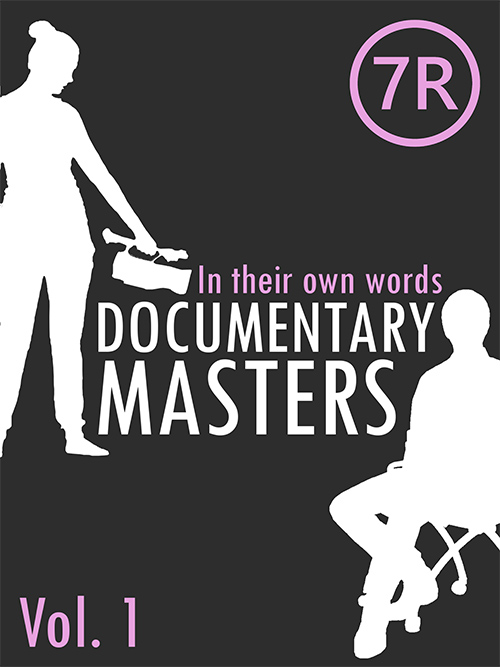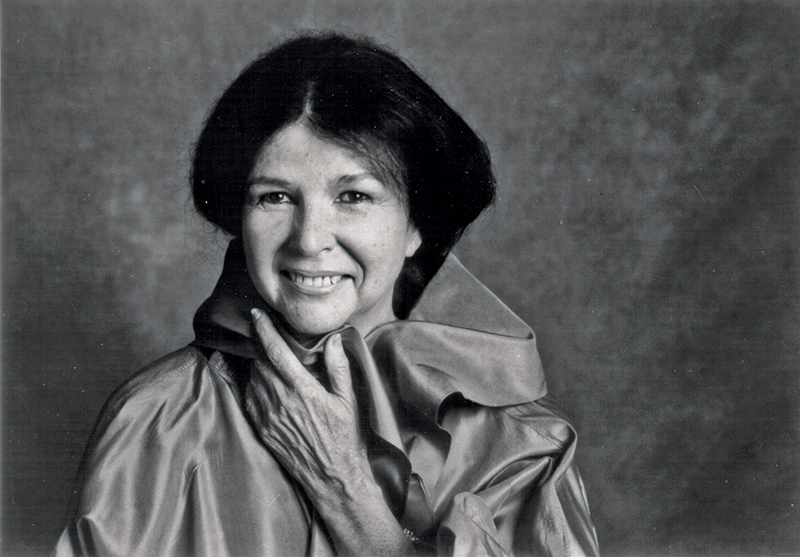In Their Own Words: A Compact and Accessible Digital Guide to the Masters of Nonfiction Filmmaking
 In Their Own Words: Documentary Masters Vol. 1, written by Alex Heeney, Elena Lazic and Brett Pardy, is a compact eBook from Seventh Row that is designed to give novice filmmakers an introduction to the craft and philosophy of nonfiction filmmaking. The volume offers a selection of transcribed short interviews with ten critically acclaimed filmmakers. Each discusses a range of topics related to one or more award-winning films they have made, explaining the key steps and decisions in their artistic process, from concept to completion.
In Their Own Words: Documentary Masters Vol. 1, written by Alex Heeney, Elena Lazic and Brett Pardy, is a compact eBook from Seventh Row that is designed to give novice filmmakers an introduction to the craft and philosophy of nonfiction filmmaking. The volume offers a selection of transcribed short interviews with ten critically acclaimed filmmakers. Each discusses a range of topics related to one or more award-winning films they have made, explaining the key steps and decisions in their artistic process, from concept to completion.
What is immediately striking about In Their Own Words is its curious structure. The volume is organized neither thematically nor by filmmaker, but offers instead an unusual combination of these two approaches. The first two sections of the book, for example, cover the themes of creative cinema and political cinema, with several short interviews in each, while the latter two sections are dedicated specifically to the films of Frederick Wiseman and Gianfranco Rosi. On the difficult question of who to include in a volume hoping to impart wisdom directly from those in the know, the authors explain that a filmmaker’s ability to “make their interest in the subject infectious” is the key factor that separates the master from the average documentary filmmaker. Another curatorial criterion, according to the authors, is the selection of filmmakers who share a “common goal of pushing, challenging, and reinventing the form” in some manner. The interviews included in this volume therefore embrace filmmakers employing a broad range of motivations and methods.
The opening section on creative cinema includes interviews with Joshua Oppenheimer (The Look of Silence), Hubert Sauper (We Come as Friends), Sophie Fiennes (Grace Jones: Bloodlight and Bami) and Penny Lane (Nuts!). While each interview offers a window into the making of a particular film, the authors do not draw any parallels across the interviews in each section. In fact, there is even variety in the format in which the interview is presented. Some interviews are presented as fully transcribed conversations, while others include direct quotations within a narrative format. It is possible that this heterogenous approach reflects the multi-author nature of the volume. Nonetheless, there is wisdom to be found. For example, Oppenheimer’s detailed description of how he worked with metaphor, camera placement and sound in The Look of Silence elucidates the nuts and bolts of an approach grounded in magical surrealism, or, in his words, “the only adequate fiction genre for addressing the haunting and unresolved trauma in conditions of complete political impunity.”
French director Hubert Sauper discusses his uneasy “outsider” vantage point at the intersection of several worlds in South Sudan in We Come as Friends, which won the Special Jury Award for Cinematic Bravery at the 2014 Sundance Film Festival. Sauper’s approach, aiming to be reflexive of colonialist histories and relationships, expresses visually the covert tensions that exist between indigenous, immigrant, aid work and missionary communities, even in instances where these cultures do not regularly interact. Visualizing absence is a common challenge in nonfiction filmmaking, and it is instructive to read how Sauper used juxtaposition to underscore differences between the worlds of the village and the United Nations (UN) camp he visits. As he explains, “[a] lot of people would just have an uneasy feeling seeing this UN camp without necessarily knowing why. But one of the reasons why is that, a minute before, you saw a tribal village.” Sauper places a sequence depicting an organic village life before that of a deliberate institutional construction to help viewers to sense the artificial structure of a planned intervention. This technique opens up a space for audiences to question the intentions and orientation of the UN’s mission.
The highlight of the section is the interview with Penny Lane, which is full of humor and insight. Lane speaks with Alex Heeney about her 2016 documentary Nuts!, which chronicles the outrageous schemes of John Brinkley, who duped thousands of men into paying for a fake infertility cure. Lane discusses how she used a variety of techniques—from pacing to animation to narration—to mirror “Brinkley’s knack for obfuscating facts.” She intentionally performs a sleight of hand to keep her audience engaged until the critical third act, when all is revealed. She describes the logic behind her carefully crafted script: “[f]or the movie to work, it had to be seductive, colorful, charming, fast, and it had to keep you entertained so you didn’t have time to engage your critical capacities.” Finding the right balance of these elements in the film took eight years and, in some instances, involved counter-intuitive thinking. On the question of narration, for example, Lane deliberated whether to use a “folksy, ‘Come on, kids! I’m going to tell you a tall tale!’” approach or a “[Sir David] Attenborough nature documentary” voice. “I ended up going with the blandest… most boring narrator ever,” she recounts, though this creative choice ultimately adds to the offbeat whimsical feel of the film.
The political cinema section of In Their Own Words includes films by Steve James (ABACUS: Small Enough to Jail), Chris Hegedus and DA Pennebaker (Unlocking the Cage) and Alanis Obomsawin (Our People Will Be Healed). The interviews provide insight into how to solve common technical challenges that arise in politically informed filmmaking. James, for example, discusses how he navigated the central challenge of visually telling a story of a court case without the ability to bring cameras into the courtroom. He also discusses strategies for elevating the personal within a political story. For example, a moment during which the central protagonist laments the dryness of his chicken sandwich becomes a visual and emotional space capable of revealing family dynamics and the stakes of the story being told.

The interview with Obomsawin marks the occasion of her 50th film about indigenous issues in Canada. Her 2017 film, Our People Will Be Healed, combines interviews with students, teachers, parents and elders of the Cree community of Norway House to create a community-wide portrait of Helen Betty Osborne Ininiw Education Resource Centre. The school offers culturally relevant education in an attempt to “restore…what was lost in this brutal history of [indigenous] schooling” in Canada. In her interview Obomsawin underscores the importance of listening to her participants: “I don’t interpret. It’s the people who speak for themselves.” In this manner, Obomsawin’s sensitivity informs her practical approach to nonfiction filmmaking, in which she constructs her films as “a tool for healing” and to inspire a collective vision of hope for a better future.
The second half of the book includes sections entirely dedicated to leading filmmakers Frederick Wiseman and Gianfranco Rosi. Wiseman is best known for his detailed and comprehensive place-based visual studies of institutions. The e-Book includes three chapters with Wiseman discussing his films National Gallery, In Jackson Heights and Ex Libris: The New York Public Library. The trio of interviews offers insight into Wiseman’s signature observational approach to nonfiction—everything ranging from his production schedule to his method for building a consistent visual story without the use of on-screen interviews to his specific techniques navigating the edit. The interviews are particularly instructive for anyone wanting to try their hand at observed filmmaking. Wiseman explains why he purposively tries to shoot with “no thesis” and an open mind and how, in so doing, his films offer a response and consequence of this experience of silent observation, rather than the imposition of a particular worldview. His discussion of post-production challenges, such as sequence-building to capture the essence of a moment and creative transitions, have technical relevance for nonfiction filmmakers and editors of all styles. The section also includes Wiseman’s detailed thoughts and considerations in a sound mix.
Though the cinema of place also figures strongly in Gianfranco Rosi’s films, In Their Own Words offers insight into the important differences in approaches taken by Rosi and Wiseman—in fact, an entire chapter is dedicated to precisely this question. Full immersion in the life of a community is a key ingredient to the success of Rosi’s films. He works as a one-man crew, spending a year or more in the places where his films are set. He prioritizes relationship-building during this time, and this allows him to expertly build portraits, sometimes of unlikely characters. Discussing his Academy Award-nominated Fire at Sea, Rosi explains how he consciously avoided portraying the island of Lampedusa as “a collector of stories linked to tragedies of the migrants.” He wanted viewers to encounter first the people of the island of Lampedusa and then, “through them, tell the story of the migrants.” In this way, Lampedusa becomes a microcosm of Europe in the throes of global crisis. At its most basic level, the section offers a thoughtful reflection on the craft. Rosi explains how he decides where to place the camera in relation to participants, why and how to create narrative stillness in images, and ways to balance sound and silence in film. These are the elements that serve to create harmony in Rosi’s films, which can feel symphonic even in their profound quietness.
Given its simplicity and accessibility, In Their Own Words: Documentary Masters Vol.1 is best suited to student filmmakers looking to understand how many of the most accomplished filmmakers working today approach their topics and their filmmaking, or anyone interested in learning more about nonfiction filmmaking in general. At $15, sections of this e-Book will offer a good companion for anyone watching the films discussed above for the first time.
Sandra Ignagni is a writer, researcher and nonfiction filmmaker. Her latest film, Highway to Heaven, was produced by the National Film Board of Canada and is available in Canada on CBC.




